The Ultimate Guide to Line Drawing
Welcome to the fascinating world of line drawing, where simplicity meets creativity! This guide explores the fundamental techniques, styles, and tools of line drawing, providing insights for beginners and seasoned artists alike to enhance their skills and creativity. Whether you're just picking up a pencil or you're a seasoned pro looking to refine your craft, you'll find something valuable here. Line drawing is not just about putting marks on paper; it’s about expressing emotions, capturing moments, and telling stories through the elegance of lines.
At its core, line drawing is about understanding the relationship between lines and the forms they depict. Imagine walking through a bustling market, observing the intricate details of everyday objects. Every curve, every straight line, tells a story. This guide will help you unlock the secrets behind those lines, allowing you to create your own visual narratives.
Throughout this article, we will dive deep into the various aspects of line drawing, starting with the importance of line quality and how it can dramatically influence the mood of your artwork. We will then introduce you to the essential tools of the trade, from pencils to pens, and how each can affect your line work. You'll learn about basic techniques that form the backbone of effective line drawing, styles that can inspire your creativity, and practical exercises to develop your skills.
So, are you ready to embark on this artistic journey? Grab your sketchbook, and let’s explore the world of line drawing together!
Line quality refers to the thickness, texture, and fluidity of lines in drawing. This section will delve into how varying line quality can impact the overall expression and mood of your artwork. Think of line quality as the voice of your drawing; a thick, bold line can shout, while a delicate, thin line can whisper. By mastering line quality, you can convey emotions and create depth in your work.
Selecting the right tools is crucial for effective line drawing. Here, we’ll cover various pencils, pens, and papers that can elevate your line work and suit different artistic styles. The right tools can make a world of difference, transforming a simple sketch into a captivating piece of art.
Different types of pencils can produce varying line qualities. This subsection will discuss graphite, colored, and mechanical pencils, highlighting their unique characteristics and best uses in line drawing. Each pencil type has its own personality, and knowing how to use them effectively can unlock new creative possibilities.
Graphite pencils are versatile and widely used in line drawing. We’ll explore their grading system and how to choose the right hardness for your desired effect. From the softest 8B, which creates rich, dark lines, to the hardest 4H, which provides light, precise marks, understanding the grading system is key to mastering your line work.
Colored pencils add vibrancy to line drawings. This section will explain how to effectively incorporate color into your line work while maintaining clarity and definition. The interplay of color and line can evoke emotions and bring your drawings to life, making them not just images, but experiences.
Pens offer a distinct quality and permanence to line drawing. Here, we’ll examine various pen types, including ink pens and brush pens, and their applications in creating dynamic lines. The fluidity of ink can create stunning contrasts and textures that are hard to achieve with pencils alone.
Mastering basic techniques is essential for successful line drawing. This section introduces fundamental methods such as contour drawing, hatching, and cross-hatching to create depth and texture. These techniques are the building blocks of line drawing, allowing you to express yourself more freely and confidently.
Contour drawing focuses on capturing the outline of subjects. We’ll discuss how this technique enhances observational skills and encourages a deeper understanding of forms and shapes. It’s like training your eye to see the world in a new way, transforming the ordinary into extraordinary.
Hatching and cross-hatching techniques create shading and texture. This subsection will explain how to use these methods effectively to add dimension and interest to your drawings. Think of these techniques as the seasoning in your artwork; they can enhance the flavor and make your drawings pop!
Line drawing encompasses various styles, each with its unique flair. We’ll explore minimalist, abstract, and illustrative styles, providing examples and tips for developing your personal style. Finding your style is like discovering your artistic voice; it’s a journey that reflects who you are as an artist.
Minimalist line drawing emphasizes simplicity and clarity. This section will discuss the principles of minimalism and how to achieve impactful results with fewer lines. Sometimes, less truly is more, and embracing minimalism can lead to stunningly elegant compositions.
Illustrative line drawing combines detailed lines with imaginative elements. We’ll explore techniques for storytelling through line work and how to create engaging compositions. Here, your imagination is the limit, and your lines can weave complex tales that captivate viewers.
Regular practice is key to improving your line drawing skills. This section will offer exercises and challenges designed to enhance your technique, creativity, and confidence as an artist. Like any skill, the more you practice, the better you become, and the more you discover your unique style.
Engaging in daily drawing challenges can foster discipline and creativity. We’ll provide ideas for challenges that encourage exploration and growth in your line drawing practice. These challenges are not just about drawing; they’re about pushing your boundaries and discovering new aspects of your artistic self.
Sketching from life enhances observational skills and understanding of form. This subsection will discuss strategies for effective life drawing and how to translate observations into compelling line work. Life is the best teacher, and by sketching what you see, you can truly learn to capture the essence of your subjects.
Q: What is the best pencil for beginners?
A: For beginners, a standard HB graphite pencil is a great choice as it offers a good balance of hardness and softness, making it versatile for various line qualities.
Q: How can I improve my line drawing skills?
A: Regular practice, experimenting with different techniques, and studying the work of other artists can significantly enhance your line drawing skills.
Q: What type of paper is best for line drawing?
A: Smooth drawing paper or bristol board works well for line drawing, as it allows for clean, crisp lines and can handle various mediums.
Q: Can I use colored pencils over graphite?
A: Yes! Adding colored pencils over graphite can create a beautiful effect, but make sure to apply color lightly to maintain the integrity of your line work.
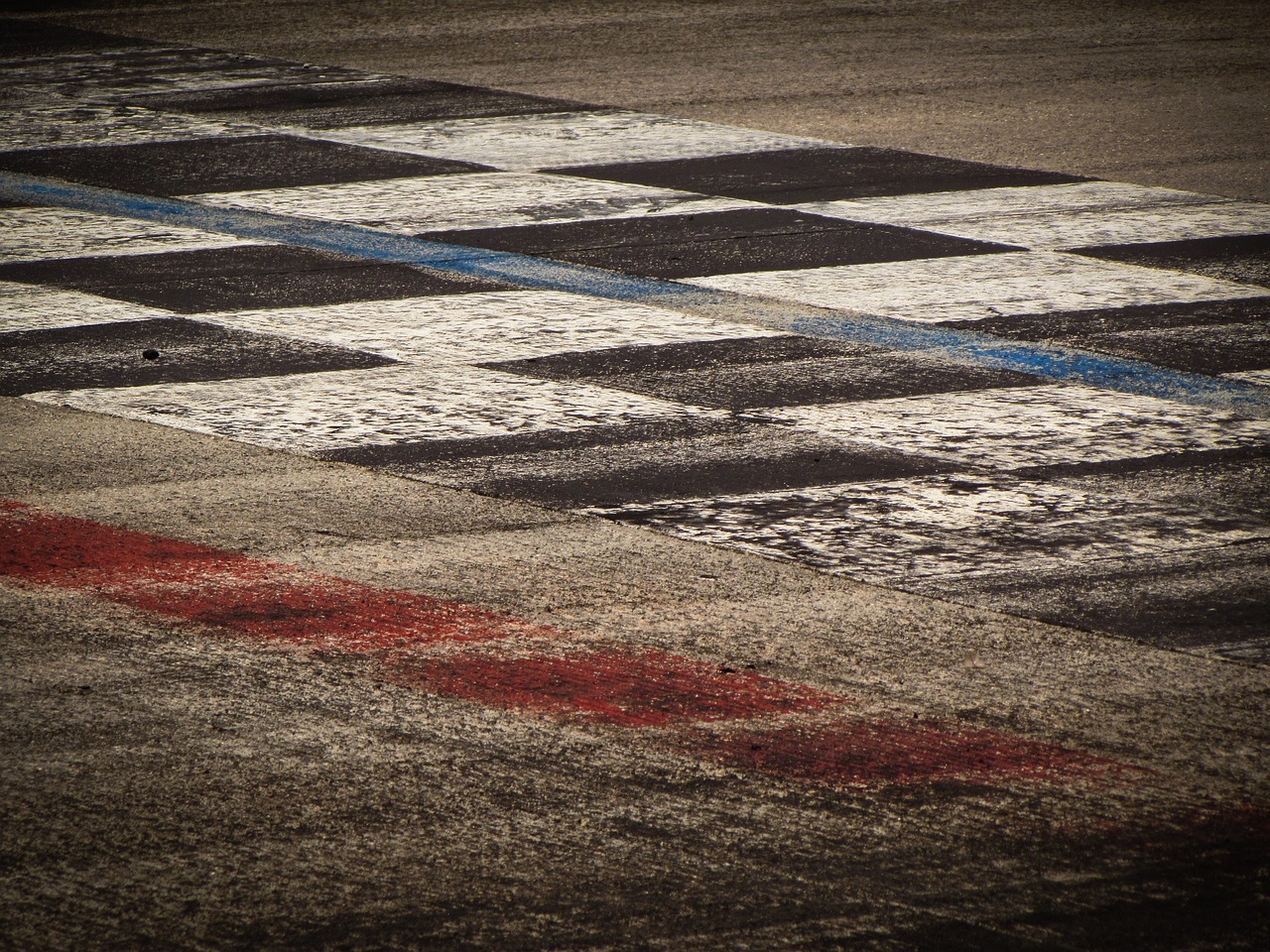
Understanding Line Quality
Line quality is a fundamental aspect of drawing that can significantly influence the emotional impact and visual appeal of your artwork. Think of line quality as the voice of your drawing—it can whisper delicately or shout boldly, depending on how you wield your tools. By varying the thickness, texture, and fluidity of your lines, you can create a rich tapestry of expression that draws viewers in and communicates your artistic intent.
When you look at a piece of art, the lines can evoke different feelings. For example, thick, bold lines often convey strength and confidence, while thin, delicate lines might suggest fragility and subtlety. This variation can be compared to the way different instruments contribute to a symphony: each line adds its unique sound to the overall harmony of the piece.
To better understand line quality, consider the following factors:
- Thickness: The width of a line can dramatically change its impact. A thick line can dominate a composition, while a thin line may recede into the background.
- Texture: Lines can be smooth, rough, broken, or even dotted. The texture can add depth and interest, inviting the viewer to explore different areas of the artwork.
- Fluidity: How a line flows can convey motion and energy. A fluid, sweeping line can suggest grace, while a jagged line may evoke tension or chaos.
Experimenting with these elements can help you discover your unique voice as an artist. For instance, try drawing the same object multiple times, each time varying the line quality. You might find that a simple change in line thickness can transform a mundane subject into something extraordinary. This practice not only enhances your skills but also encourages you to think critically about the choices you make in your artwork.
Moreover, understanding line quality allows you to convey different moods and emotions. For example, a drawing with erratic, jagged lines might evoke feelings of anxiety or turmoil, while smooth, flowing lines can create a sense of calm and serenity. By mastering line quality, you can become more intentional in your artistic expression, guiding your audience's emotional journey through your work.
In conclusion, line quality is not just a technical aspect of drawing; it is a powerful tool for storytelling and emotional expression. By paying close attention to how you use lines, you can elevate your artwork from mere representation to a compelling narrative that resonates with viewers on a deeper level.
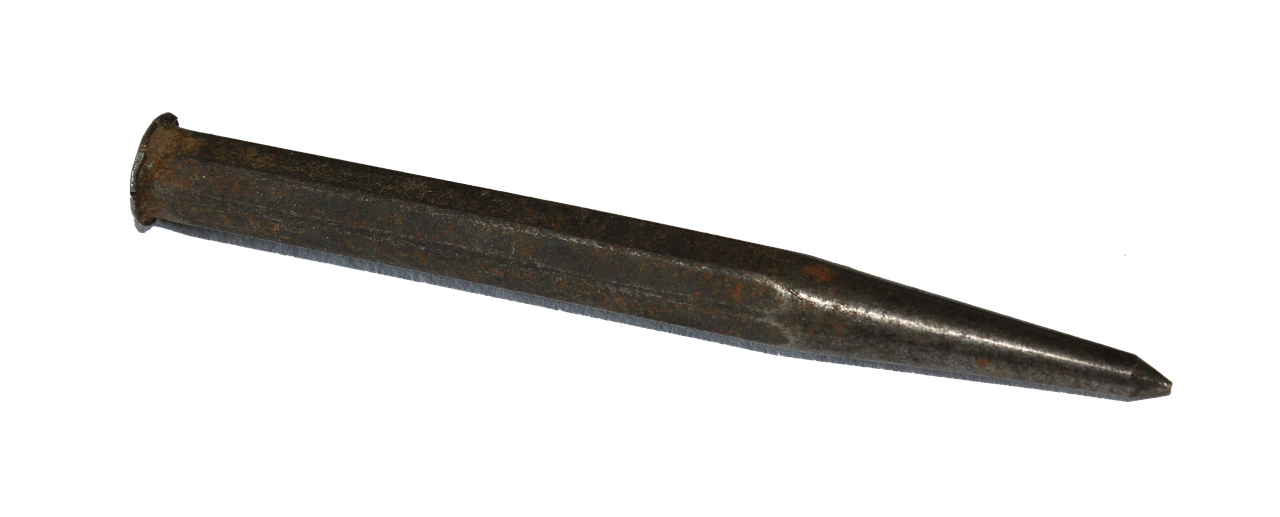
Essential Tools for Line Drawing
When it comes to line drawing, having the right tools can make a world of difference. Just like a chef needs quality knives to create a masterpiece in the kitchen, an artist requires the proper instruments to bring their visions to life. The tools you choose can significantly influence the quality and style of your line work. In this section, we’ll explore various tools, from pencils to pens, and even the types of paper that can enhance your artistic expression.
First up, let’s talk about pencils. Pencils are the backbone of line drawing, and different types offer unique characteristics that can affect your work. For instance, graphite pencils are incredibly versatile, allowing for a range of line qualities depending on the hardness of the lead. The grading system for graphite pencils ranges from 9H (very hard) to 9B (very soft), giving you the flexibility to create fine, delicate lines or bold, expressive strokes. Understanding this grading system can help you choose the right pencil for your desired effect.
In addition to graphite pencils, colored pencils can add a vibrant touch to your line drawings. These pencils come in a variety of hues and can be layered to create depth and richness in your artwork. However, it’s essential to know how to incorporate color effectively without losing the clarity and definition of your lines. When using colored pencils, consider techniques such as blending and layering to achieve a polished finish.
Graphite pencils are a staple for any artist. They allow for a wide range of expression, from soft, subtle lines to bold, dramatic strokes. The key to mastering graphite lies in understanding the hardness of the pencil you’re using. Softer pencils (B grades) produce darker lines, while harder pencils (H grades) create lighter, more precise lines. Experimenting with different grades can help you discover your preferred style and technique.
Colored pencils can transform your line drawings into vibrant works of art. They are perfect for adding personality and flair to your creations. When using colored pencils, remember to start with lighter colors and gradually build up to darker shades. This layering technique not only enhances the richness of your colors but also maintains the integrity of your lines.
Now, let’s move on to pens. Pens offer a distinct quality and permanence to your line drawings that pencils simply can’t match. There are various types of pens available, each providing different line qualities. For example, ink pens are excellent for creating crisp, clean lines, while brush pens allow for more fluid and dynamic strokes. Choosing the right pen can elevate your line drawing, adding a unique character to your work.
| Tool Type | Characteristics | Best Uses |
|---|---|---|
| Graphite Pencil | Versatile, varying hardness | Sketching, detailed line work |
| Colored Pencil | Vibrant, layered application | Add color and depth |
| Ink Pen | Crisp, permanent lines | Finalizing drawings, clean outlines |
| Brush Pen | Fluid, expressive strokes | Dynamic line work, calligraphy |
In conclusion, the tools you select for your line drawing can greatly impact your artistic journey. Whether you prefer the classic feel of graphite or the vibrant kick of colored pencils, understanding the characteristics and best uses of each tool will help you develop your unique style. Remember, the most important part is to experiment and find what works best for you!
- What is the best pencil for beginners? Graphite pencils are generally recommended for beginners due to their versatility and ease of use.
- Can I use regular paper for line drawing? While regular paper can work, using higher-quality drawing paper can enhance the overall look of your line work.
- How do I choose the right pen for line drawing? Consider the effect you want to achieve; ink pens are great for precision, while brush pens offer a more expressive line.
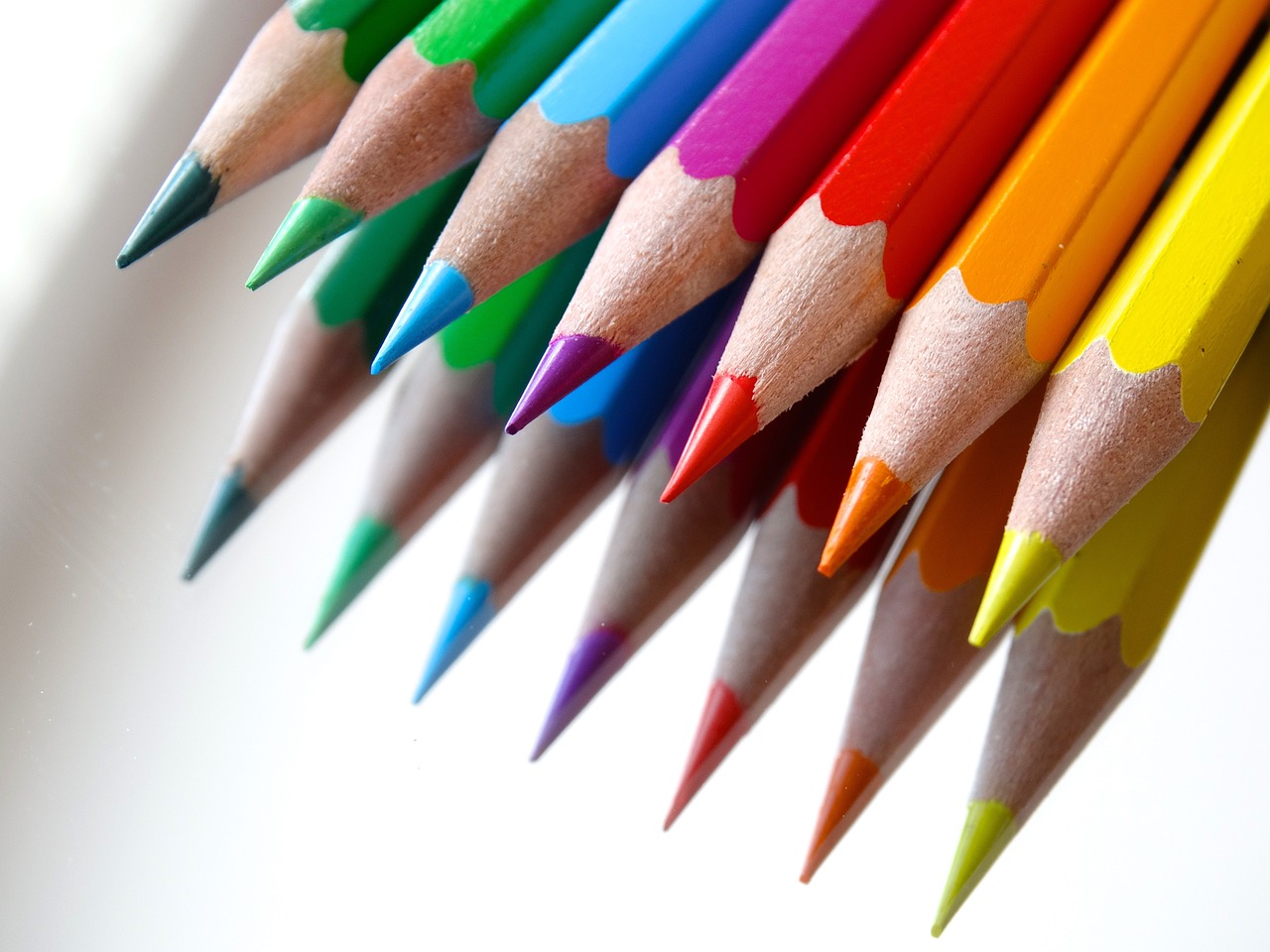
Types of Pencils
When it comes to line drawing, the type of pencil you choose can significantly influence the quality and character of your artwork. Each pencil type offers distinct characteristics that cater to different artistic styles and preferences. Let's dive into the three main types of pencils: graphite, colored, and mechanical pencils. Understanding their unique properties will help you make informed choices in your artistic journey.
Graphite pencils are perhaps the most commonly used in line drawing. They come in various grades, ranging from hard (H) to soft (B). The grading system indicates the hardness of the pencil lead, which affects the darkness and texture of the lines produced. For instance, harder pencils (like 2H) create lighter, finer lines, making them ideal for detailed work. On the other hand, softer pencils (like 4B) produce darker, bolder lines, perfect for shading and creating depth. Here's a quick overview of the graphite pencil grading system:
| Grade | Type | Characteristics |
|---|---|---|
| H | Hard | Produces light, fine lines; ideal for detail work. |
| B | Soft | Creates dark, bold lines; excellent for shading. |
| HB | Medium | Balanced hardness; versatile for general use. |
Next up, we have colored pencils. These vibrant tools can transform your line drawings into colorful masterpieces. While they may not replace the classic graphite pencil for detailed line work, they offer a fantastic way to add personality and flair to your art. The key to using colored pencils effectively lies in layering and blending. Start with light strokes to build up color gradually, and use blending techniques to achieve smooth transitions between hues. This approach allows you to maintain clarity and definition in your line work while infusing it with life and vibrancy.
Lastly, let's talk about mechanical pencils. These handy tools provide a consistent line width, making them a favorite among artists who prefer precision. With a variety of lead sizes available, mechanical pencils allow for meticulous detail and control over your line quality. Unlike traditional wooden pencils, mechanical pencils don't require sharpening, which means you can focus entirely on your drawing without interruptions. They are especially useful for intricate designs and technical illustrations, where every line counts.
In summary, choosing the right pencil for your line drawing can significantly enhance your artistic expression. Whether you prefer the versatility of graphite, the vibrancy of colored pencils, or the precision of mechanical pencils, each type has its own strengths and can be used to create stunning artwork. So, experiment with different pencils and discover which ones resonate with your unique style!
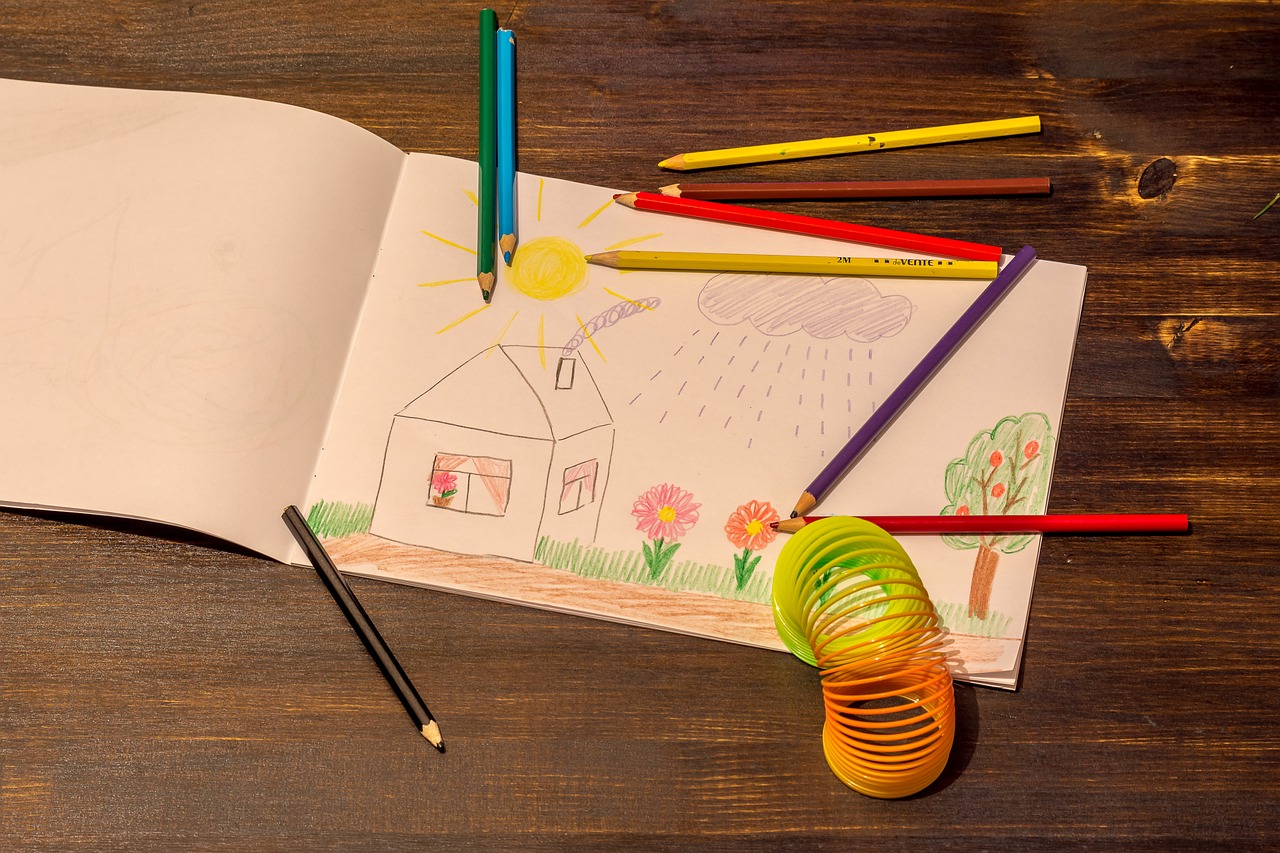
Graphite Pencils
Graphite pencils are the backbone of line drawing, and for good reason! They offer a versatile range of line qualities that can suit any artist's needs. Whether you’re sketching a quick idea or creating a detailed masterpiece, the right graphite pencil can make all the difference. The grading system of graphite pencils is designed to help artists choose the perfect hardness for their desired effects. The scale typically ranges from H (hard) to B (black), with F (fine point) in between. This means that you can create everything from fine, delicate lines to bold, expressive strokes with just a single pencil!
When selecting a graphite pencil, it’s essential to consider the line quality you wish to achieve. For example, harder pencils (H grades) produce lighter, finer lines that are great for detailed work and precise outlines. On the other hand, softer pencils (B grades) yield darker, thicker lines that can add depth and character to your artwork. A common choice for many artists is the 2B pencil, which strikes a balance between darkness and ease of use, making it perfect for both shading and outlining.
Let’s break down the characteristics of these pencils a bit more:
| Pencil Grade | Line Quality | Best Use |
|---|---|---|
| H (Hard) | Light, fine lines | Detailed work, precise outlines |
| HB | Medium line quality | General sketching |
| B (Black) | Dark, thick lines | Shading, expressive strokes |
Using graphite pencils also involves understanding how to care for them. Sharpening your pencils to a fine point is crucial for achieving those sharp lines, but be careful not to over-sharpen, as this can lead to breakage. Additionally, consider investing in a good quality pencil sharpener or a craft knife for more control over the tip. Remember, a well-maintained pencil can significantly enhance your drawing experience!
Lastly, don't forget to experiment with different brands and types of graphite pencils. Each one can offer unique textures and line qualities that can inspire new techniques in your line drawing. So, grab your sketchbook, and let those graphite pencils dance across the page!
- What is the best graphite pencil for beginners? - A good starting point is the 2B pencil, as it provides a balance of darkness and ease of use.
- How do I choose the right hardness for my drawing? - Consider the effect you want to achieve: use harder pencils for fine details and softer pencils for shading.
- Can I use colored pencils alongside graphite pencils? - Absolutely! Combining them can create stunning contrasts and add depth to your artwork.

Colored Pencils
Colored pencils are not just a tool; they are a gateway to unleashing your creativity and adding a vibrant splash to your line drawings. Unlike graphite pencils, which are primarily used for shading and sketching, colored pencils allow you to infuse your artwork with life and energy. They come in a variety of shades, and their versatility makes them a favorite among artists of all levels. Whether you’re creating a soft pastel effect or a bold, vibrant piece, colored pencils can help you achieve your desired outcome.
One of the key advantages of using colored pencils is their ability to layer colors. This technique allows you to blend and create gradients, which can add depth and dimension to your drawings. For instance, by layering a light shade over a darker one, you can create a rich texture that draws the viewer's eye. Additionally, colored pencils can be used for both detailed work and broader strokes, making them incredibly adaptable to different styles and techniques.
When incorporating colored pencils into your line drawings, it’s essential to consider the following:
- Color Selection: Choose colors that complement your subject matter. A well-thought-out palette can enhance the overall impact of your artwork.
- Pressure Control: The pressure you apply while drawing can significantly affect the vibrancy of the colors. Light strokes yield softer hues, while firmer pressure produces more vivid tones.
- Blending Techniques: Experiment with blending tools like tortillons, or even your fingers, to achieve smooth transitions between colors.
Another fascinating aspect of colored pencils is their ability to create different effects depending on the paper you use. For example, using textured paper can enhance the pencil's grip and allow for more pronounced strokes, while smooth paper can provide a sleek finish. This interplay between the pencil and paper can elevate your artwork to new heights, encouraging you to experiment and find the perfect combination that works for you.
In summary, colored pencils are a powerful medium for artists looking to add a unique flair to their line drawings. By understanding how to use them effectively, you can transform your artwork into a vibrant expression of your creativity. So, grab your colored pencils and let your imagination run wild!
Q: Can I use colored pencils on any type of paper?
A: While you can technically use colored pencils on any paper, the results can vary significantly. Textured papers can enhance the grip of the pencil, while smooth papers allow for cleaner lines and blending. Experiment to find what works best for your style!
Q: How do I blend colors with colored pencils?
A: Blending can be achieved by layering colors and using tools like blending stumps or your fingers. You can also use a colorless blender pencil to smooth out the transitions between colors.
Q: Are colored pencils permanent?
A: Most colored pencils are not permanent and can fade over time, especially if exposed to sunlight. To preserve your artwork, consider using a fixative spray.
Q: Can I mix colored pencils with other mediums?
A: Absolutely! Colored pencils can be combined with ink, watercolor, and more to create mixed media pieces. Just be mindful of the different drying times and properties of each medium.

Types of Pens
When it comes to line drawing, the choice of pen can make a world of difference. Pens are not just tools; they are extensions of your creativity that can bring your ideas to life with precision and flair. Different types of pens offer various qualities that can suit different styles and techniques. Whether you are aiming for bold, expressive strokes or delicate, intricate lines, understanding the types of pens available is essential for any artist. Let's dive into some popular pen types and their unique characteristics.
One of the most common types of pens used in line drawing is the ink pen. Ink pens come in various forms, including fountain pens, rollerball pens, and disposable ink pens. They are known for their smooth flow of ink, which allows for consistent line quality. The beauty of ink pens lies in their ability to create both fine details and bold lines, depending on the pressure applied and the nib size. Artists often appreciate the permanence of ink, as it does not smudge easily and can withstand the test of time.
Another popular option is the brush pen. Brush pens are unique because they combine the qualities of a brush and a pen, making them incredibly versatile. With a flexible brush tip, artists can create varying line widths with ease, adding a dynamic quality to their work. Brush pens are particularly favored in styles such as calligraphy and illustrative drawing, where fluidity and expression are paramount. The ability to create both thick and thin lines in a single stroke makes brush pens a favorite among many artists.
For those who prefer precision, technical pens are a fantastic choice. These pens are designed for detailed work and are often used in architectural drawings and technical illustrations. They come with a consistent nib size, ensuring that every line is uniform and precise. This makes them ideal for artists who want to maintain accuracy in their line work. Technical pens often use archival ink, which is fade-resistant and waterproof, ensuring that your artwork remains vibrant over time.
To help you choose the right pen for your line drawing needs, here’s a quick comparison table:
| Type of Pen | Characteristics | Best For |
|---|---|---|
| Ink Pen | Smooth flow, various nib sizes, permanent | General line drawing, bold strokes, fine details |
| Brush Pen | Flexible brush tip, varying line widths | Calligraphy, expressive line work, illustrations |
| Technical Pen | Consistent nib size, archival ink | Detailed work, technical illustrations, precision |
In addition to these types, there are also specialty pens, such as gel pens and metallic pens, which can add unique effects to your line drawings. Gel pens are known for their vibrant colors and smooth application, while metallic pens can create eye-catching highlights and accents. The choice of pen ultimately depends on your personal style and the effect you wish to achieve in your artwork.
In conclusion, experimenting with different types of pens can open up a world of possibilities in your line drawing practice. Each pen offers its own unique qualities that can enhance your creativity and expression. So, don’t be afraid to explore and find the perfect pen that resonates with your artistic vision!
- What type of pen is best for beginners? Ink pens are a great choice for beginners due to their versatility and ease of use.
- Can I use regular pens for line drawing? While regular pens can work, it's best to use pens specifically designed for drawing to achieve better results.
- How do I maintain my pens? Always cap your pens when not in use, and store them horizontally to prevent drying out.

Basic Techniques for Line Drawing
Mastering basic techniques is essential for successful line drawing. These foundational methods not only enhance your skills but also allow you to express your creativity more effectively. Let's dive into some key techniques that every aspiring artist should explore: contour drawing, hatching, and cross-hatching. Each of these techniques serves a unique purpose and can dramatically impact the overall quality of your artwork.
Contour drawing is a technique that focuses on capturing the outline of subjects. Imagine tracing the silhouette of an object without lifting your pencil from the paper; that’s contour drawing in action! This method enhances your observational skills and encourages a deeper understanding of forms and shapes. By concentrating solely on the outlines, you train your eye to notice subtle details and proportions, which can be incredibly beneficial for any artist. You might find that as you practice, your ability to visualize shapes and spaces improves significantly.
Next up is hatching and cross-hatching, two techniques that are essential for creating shading and texture in your line drawings. Hatching involves drawing parallel lines close together to create the illusion of depth and shadow. The closer the lines are, the darker the area appears. Cross-hatching takes this a step further by layering another set of parallel lines over the first, usually at an angle. This technique allows for even more complexity in shading, giving your drawings a richer, more dynamic quality. As you practice these methods, experiment with varying the distance between your lines to see how it affects the overall tone of your work.
To put these techniques into practice, consider the following exercises:
- Spend time doing contour drawings of everyday objects around you. Try to capture their essence without looking at your paper.
- Practice hatching and cross-hatching on a single shape, like a sphere or a cube, to see how light and shadow affect the form.
- Combine both techniques in a single drawing, using contour lines for the outline and hatching for shading to create depth.
Incorporating these basic techniques into your practice will not only improve your line drawing skills but also enhance your overall artistic expression. Remember, the key to mastery is consistent practice and experimentation. Don't be afraid to make mistakes; they are often the best teachers. As you grow more comfortable with these techniques, you'll find your own unique style emerging, which is the ultimate goal of any artist.
Q: How often should I practice line drawing?
A: Consistency is key! Aim for daily practice, even if it's just for 10-15 minutes. Regular practice helps build muscle memory and improve your skills over time.
Q: Do I need expensive tools to start line drawing?
A: Not at all! Start with basic tools like a pencil and paper. As you progress, you can explore different mediums and invest in higher-quality supplies if you choose.
Q: Can I use line drawing techniques in digital art?
A: Absolutely! Many of the techniques discussed, such as contour drawing and hatching, can be applied using digital tools. Just ensure you understand how to replicate these effects using your software of choice.
Q: What if I don't like my initial drawings?
A: Remember that every artist has to start somewhere. Embrace the process, and don’t be too hard on yourself. Use your early works as learning experiences to grow and improve.

Contour Drawing
Contour drawing is a fundamental technique in the world of art that emphasizes the importance of outlines. Imagine tracing the shape of an object with your eyes while your hand follows along on paper; that’s the essence of contour drawing. This method is not just about creating a mere outline; it’s about capturing the essence of the subject. By focusing on the outer edges and the significant internal lines, artists can develop a deeper understanding of the forms and shapes they are depicting. This technique encourages artists to slow down, observe, and really engage with their subjects, which is crucial for honing observational skills.
One of the most exciting aspects of contour drawing is its ability to enhance your perception of space and proportion. When you practice this technique, you’ll start to notice how the contours of different objects interact with one another. For instance, consider how a cup sits on a table. The curve of the cup’s edge, the way light reflects off its surface, and the shadow it casts all contribute to the overall composition. By focusing on these details, you can create a more dynamic and engaging drawing.
There are several approaches to contour drawing, each offering unique benefits:
- Continuous Line Drawing: This technique involves drawing the outline of the subject without lifting your pencil from the paper. It encourages fluidity and helps develop a sense of connection between the artist and the subject.
- Blind Contour Drawing: In this approach, you draw the subject without looking at your paper. This forces you to rely on your observation skills and can lead to some surprisingly expressive results, often capturing the essence of the subject in a way that more traditional methods may not.
- Modified Contour Drawing: This is a blend of the first two techniques, allowing you to glance at your paper occasionally while still focusing primarily on the subject. It strikes a balance between observation and control.
To get started with contour drawing, choose a simple object, like a fruit or a mug. Set it in front of you and take a moment to observe its shape, curves, and how it interacts with its surroundings. Begin your drawing, focusing solely on the contours. Don’t worry about the details or shading at this stage. The goal is to capture the outline as accurately as possible. As you practice, you’ll find that your confidence grows, and your ability to translate three-dimensional forms onto a two-dimensional surface will improve.
Ultimately, contour drawing is more than just a technique; it’s a gateway to deeper artistic expression. As you master this skill, you’ll find that it enhances not only your line drawing abilities but also your overall artistic vision. So grab your pencil, find a subject that intrigues you, and start exploring the world of contour drawing!
Q: What materials do I need for contour drawing?
A: You can start with any drawing tool, such as pencils, pens, or charcoal, and paper. The key is to feel comfortable with your materials.
Q: How often should I practice contour drawing?
A: Regular practice is essential. Aim for at least a few sessions each week to see significant improvement over time.
Q: Can contour drawing be applied to other art forms?
A: Absolutely! The skills developed through contour drawing can enhance your painting, sculpture, and even digital art.

Hatching and Cross-Hatching
Hatching and cross-hatching are two fundamental techniques that breathe life into your line drawings, allowing you to create depth, texture, and dimension. Have you ever looked at a drawing and wondered how the artist achieved such intricate shading? Well, the secret often lies in these techniques. Hatching involves drawing closely spaced parallel lines, while cross-hatching takes it a step further by layering another set of parallel lines over the first, creating a mesh of lines that can convey a variety of tones and textures. This method not only enhances the visual interest of your artwork but also helps to define forms and create a sense of volume.
To master hatching and cross-hatching, it’s essential to understand how the direction, spacing, and thickness of your lines can affect the outcome. For instance, placing lines closer together will create darker areas, while wider spacing will yield lighter tones. Think of it as a dance between light and shadow; the more you play with your lines, the more dynamic your artwork becomes. You might find it helpful to experiment with different line weights, as this can significantly alter the mood of your piece. For example, using bold, thick lines can evoke a sense of strength, while delicate, thin lines might convey fragility.
Here’s a quick overview of the differences between hatching and cross-hatching:
| Technique | Description | Best Used For |
|---|---|---|
| Hatching | Drawing parallel lines to create shading. | Simple shadows and textures. |
| Cross-Hatching | Layering intersecting lines to build depth. | Complex shading and detailed textures. |
As you practice these techniques, consider the following tips:
- Start with light pressure on your pencil or pen, gradually increasing pressure to create darker lines.
- Vary the angle of your lines to add complexity and interest to your shading.
- Use a sketchbook to practice different hatching patterns without the pressure of creating a finished piece.
Remember, the goal of hatching and cross-hatching is not just to fill in spaces but to enhance your drawing's overall composition. As you become more comfortable with these techniques, you’ll find that they can unlock new dimensions in your artwork, allowing your creativity to flourish. So grab your tools and start experimenting; the world of line drawing is waiting for your unique touch!
Q: What materials do I need to practice hatching and cross-hatching?
A: You can use any drawing materials, but it’s best to start with pencils or fine-tipped pens. A sketchbook is also essential for practice.
Q: How can I improve my hatching technique?
A: Regular practice is key. Try different line weights and spacing in your sketches to see what works best for you. Studying the works of other artists can also provide inspiration.
Q: Can I combine hatching with other drawing techniques?
A: Absolutely! Hatching and cross-hatching can be combined with other techniques like stippling or blending for even more texture and depth in your drawings.

Styles of Line Drawing
Line drawing is a versatile form of art that allows artists to express their creativity in various ways. Each style of line drawing has its own unique characteristics, offering a distinct voice to the artwork. Whether you’re a beginner or a seasoned artist, exploring different styles can enrich your artistic repertoire and inspire new ideas. In this section, we’ll delve into some of the most popular styles, including minimalist, abstract, and illustrative line drawing, and provide insights on how to develop your personal style.
The minimalist line drawing is all about simplicity and clarity. This style emphasizes the essential elements of a subject, stripping away any unnecessary details. It’s like a breath of fresh air—clean, straightforward, and impactful. To achieve a minimalist effect, focus on the following principles:
- Use fewer lines to convey the essence of the subject.
- Emphasize negative space to create balance and harmony.
- Experiment with the thickness of lines to draw attention to key features.
By adopting these principles, you can create stunning pieces that resonate with viewers, inviting them to engage with the artwork on a deeper level.
On the other hand, illustrative line drawing combines detailed lines with imaginative elements, often telling a story or conveying a message. This style allows for greater creativity and expression, as artists can weave narratives through their drawings. Think of illustrative line drawing as a visual storybook, where each line contributes to the unfolding tale. To master this style, consider the following techniques:
- Incorporate various line weights to create depth and dimension.
- Use embellishments or decorative elements to enhance the narrative.
- Focus on character development through expressive line work.
By blending detail with creativity, you can craft illustrations that captivate and engage your audience, making them feel part of the story.
Lastly, the abstract line drawing invites artists to break free from traditional representations and explore the realm of imagination. This style is all about interpretation and emotion, allowing for a more personal expression of ideas. In abstract line drawing, lines may not represent recognizable forms but instead evoke feelings or concepts. To create compelling abstract pieces, consider the following:
- Experiment with freeform lines and shapes that convey emotion.
- Play with rhythm and movement to create a sense of flow.
- Utilize contrasting line qualities to evoke tension or harmony.
Abstract line drawing encourages you to think outside the box, pushing the boundaries of what line art can be. It’s a playground for your imagination, where the only limit is your creativity.
In summary, exploring different styles of line drawing can significantly enhance your artistic skills and creativity. Whether you gravitate towards the simplicity of minimalist art, the storytelling of illustrative pieces, or the freedom of abstract forms, each style offers a unique opportunity to express yourself. So grab your tools, experiment with these styles, and let your creativity flow!
Q: What is line drawing?
A: Line drawing is a form of art that uses lines to represent shapes, forms, and textures. It can be simple or complex, depending on the artist's intent and style.
Q: How can I improve my line drawing skills?
A: Regular practice is key! Try daily drawing challenges, sketch from life, and explore different styles to enhance your skills and boost your creativity.
Q: What tools do I need for line drawing?
A: Essential tools include a variety of pencils (graphite, colored, mechanical) and pens (ink, brush pens), as well as quality paper to suit your preferred style.
Q: Can I mix different styles in my line drawing?
A: Absolutely! Mixing styles can lead to unique and innovative artwork. Don’t be afraid to experiment and find your own artistic voice.

Minimalist Line Drawing
Minimalist line drawing is an artistic approach that embraces simplicity and clarity. It’s like distilling the essence of a subject down to its bare bones, using only the most necessary lines to convey form and emotion. Imagine walking through a beautiful garden and noticing that the most striking view is often the one with the least clutter. That’s the beauty of minimalism in art! By focusing on essential lines and eliminating extraneous details, artists can create powerful images that resonate deeply with viewers.
One of the key principles of minimalist line drawing is to use negative space effectively. Negative space refers to the area around and between the subjects of an image. By allowing this space to breathe, you can enhance the overall composition and draw the viewer's eye to the focal points of your drawing. Think of it as giving your lines room to speak; just as silence can amplify a powerful statement, so can negative space enhance the impact of your art.
To achieve impactful results with fewer lines, consider the following techniques:
- Focus on Essential Shapes: Break down your subject into basic geometric forms. This helps in simplifying complex objects into manageable components.
- Use Varying Line Thickness: Experiment with different line weights to create emphasis. Thicker lines can draw attention, while thinner lines can suggest delicacy.
- Embrace Imperfection: Don’t strive for perfection. Sometimes, the most compelling minimalist drawings are those that capture the essence of a subject with a few intentional, imperfect strokes.
When creating minimalist line drawings, it’s also essential to maintain a balance between void and form. This balance can create a sense of harmony and make your artwork feel complete, even if it appears deceptively simple. Artists like Pablo Picasso and Henri Matisse have mastered this balance, showcasing how a few well-placed lines can evoke powerful emotions and narratives.
In terms of tools, minimalist line drawing often works best with fine-tipped pens or pencils, allowing for precision and control. The choice of medium can significantly affect the final outcome, so experiment with different materials to see which best suits your style. Remember, the goal is to communicate your vision with as few elements as possible, so choose your tools wisely!
Ultimately, minimalist line drawing is about finding beauty in simplicity. It challenges artists to think critically about what is necessary in their work and encourages a deeper connection with their subjects. So next time you pick up your pencil or pen, consider stripping away the excess and allowing your lines to shine on their own.
Q: What is minimalist line drawing?
A: Minimalist line drawing is an art style that focuses on simplicity and clarity by using only the most essential lines to convey a subject.
Q: What tools are best for minimalist line drawing?
A: Fine-tipped pens or pencils are ideal for minimalist line drawing, as they allow for precision and control over line quality.
Q: How can I improve my minimalist line drawing skills?
A: Practice breaking down complex subjects into basic shapes, experiment with varying line thickness, and embrace negative space to enhance your compositions.
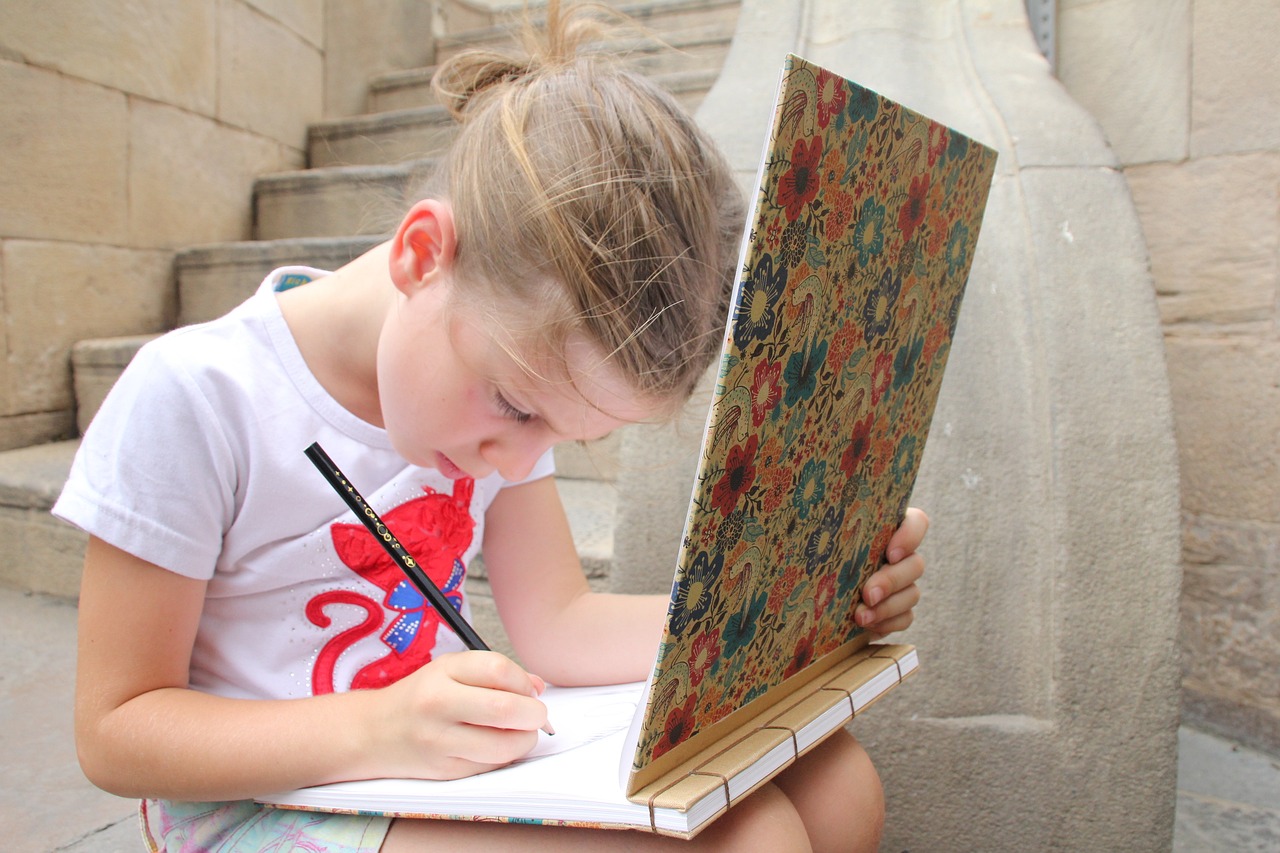
Illustrative Line Drawing
Illustrative line drawing is an exciting and dynamic style that blends detailed lines with imaginative elements to tell a story. Unlike minimalist line drawing, which focuses on simplicity, illustrative line drawing invites the viewer into a world of creativity and narrative. Imagine stepping into a vibrant storybook where every line holds a secret, every curve suggests emotion, and each stroke breathes life into characters and scenes. This style is perfect for artists who want to combine their technical skills with their storytelling abilities, creating pieces that resonate on multiple levels.
One of the most captivating aspects of illustrative line drawing is its versatility. Artists can create everything from whimsical characters to intricate landscapes, all while maintaining a cohesive line quality. The key to mastering this style lies in understanding how to manipulate line weight and texture to convey different emotions and atmospheres. For instance, thick, bold lines can evoke a sense of strength or urgency, while delicate, thin lines might suggest fragility or tranquility.
To effectively employ illustrative line drawing in your work, consider the following techniques:
- Layering Lines: Use overlapping lines to create depth and dimension in your drawings. This technique can add a sense of realism or complexity to your illustrations.
- Incorporating Patterns: Integrate patterns within your line work to enhance visual interest. Patterns can serve as backgrounds or textures that complement your main subject.
- Experimenting with Composition: Play with the arrangement of elements in your drawing. A well-composed piece can guide the viewer’s eye and create a more engaging narrative.
Moreover, illustrative line drawing often incorporates elements of fantasy and imagination. This means that artists have the freedom to bend reality, creating surreal scenes that challenge the viewer's perception. Think of the enchanting worlds created by artists like Maurice Sendak or Tim Burton, where every line contributes to a larger story filled with wonder and intrigue. To harness this imaginative potential, try sketching from your dreams or daydreams—allow your mind to wander and let your pencil follow.
In addition to these techniques, it's crucial to develop a personal style that reflects your unique voice as an artist. This can involve experimenting with different line weights, textures, and even colors. Don't be afraid to draw inspiration from other artists, but remember that the goal is to create something that feels authentic to you. As you explore illustrative line drawing, consider keeping a sketchbook dedicated to ideas, doodles, and experiments. This can serve as a valuable resource for inspiration and growth in your artistic journey.
As you dive deeper into illustrative line drawing, you may find that your work begins to resonate more with viewers. The emotional connection created through storytelling can transform a simple drawing into a powerful narrative that captivates and engages. So grab your pens, let your imagination soar, and start crafting illustrations that not only showcase your technical skills but also invite others into the vibrant worlds you create.
Q: What materials do I need to start with illustrative line drawing?
A: You can start with basic materials like graphite pencils, fine-liner pens, and quality drawing paper. As you progress, consider experimenting with colored pens or markers to add depth to your illustrations.
Q: How can I develop my personal style in line drawing?
A: The best way to develop your style is through practice and experimentation. Try different techniques, study various artists, and keep a sketchbook to document your ideas and progress.
Q: Is it necessary to have a background in drawing to start illustrative line drawing?
A: Not at all! While some basic drawing skills can be helpful, illustrative line drawing is about creativity and expression. Anyone can start with simple shapes and gradually build their skills.
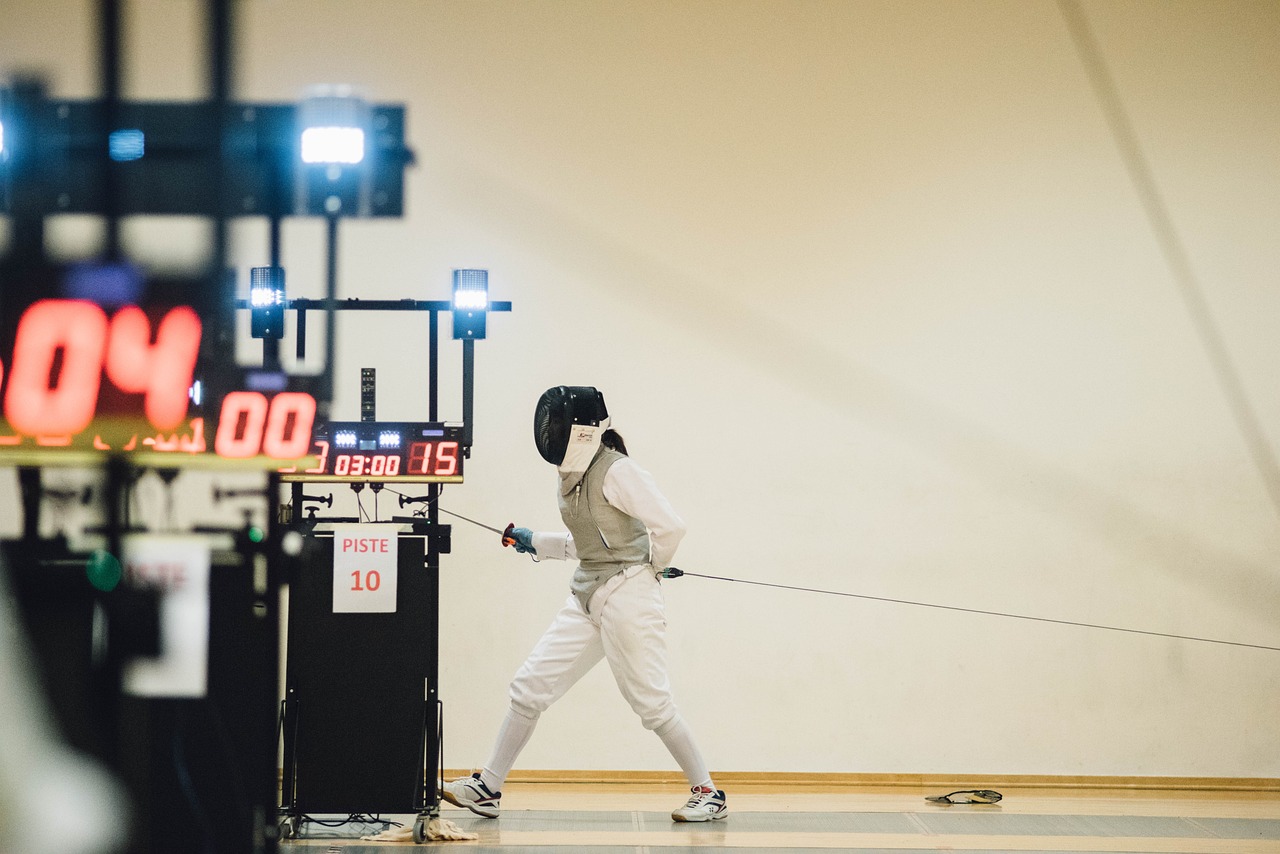
Practicing Line Drawing
Regular practice is the cornerstone of improving your line drawing skills. Just like any other art form, the more you draw, the better you become. But how do you make your practice sessions effective and enjoyable? One of the best ways to enhance your technique is through structured exercises that challenge your creativity and push your boundaries. Imagine each drawing session as a mini adventure, where you explore new techniques and styles that can transform your artistic expression.
One effective method to stay motivated is by engaging in daily drawing challenges. These challenges can range from simple prompts to complex themes, and they encourage you to draw every day, even if it’s just for a few minutes. For example, you might set a challenge to draw a different object in your home each day, or create a series of sketches based on a theme like “nature” or “urban life.” Here are a few ideas to get you started:
- Draw a still life arrangement of fruits or flowers.
- Create a character based on a random word.
- Sketch your favorite place in your city.
Another fantastic approach to practicing line drawing is sketching from life. This technique sharpens your observational skills and helps you understand the nuances of form and perspective. When you sketch from life, you’re not just copying what you see; you’re interpreting it in your unique style. Set aside time each week to visit parks, cafes, or even your living room, and draw what you see. Focus on capturing the essence of your subject with quick, fluid lines that convey movement and emotion.
To make the most out of your life drawing sessions, consider the following strategies:
- Start with quick gesture drawings to capture the overall pose and movement.
- Use a variety of line qualities to depict different textures and depths.
- Challenge yourself with longer sessions to delve into more detail.
As you continue to practice, don't forget to keep a sketchbook. This becomes your personal playground, a safe space where you can experiment without the fear of judgment. Fill it with doodles, studies, and finished pieces. Over time, you’ll notice your progress and how your style evolves. Remember, every great artist started as a beginner, and the journey is just as important as the destination.
Q: How often should I practice line drawing?
A: Aim for daily practice, even if it’s just for 10-15 minutes. Consistency is key to improvement.
Q: What should I focus on when practicing line drawing?
A: Focus on varying line quality, experimenting with different tools, and developing your observational skills through life drawing.
Q: Can I use digital tools for line drawing?
A: Absolutely! Digital tools can offer unique advantages, such as the ability to easily correct mistakes and experiment with colors and textures.
Q: How do I stay motivated to keep practicing?
A: Set specific goals, participate in drawing challenges, and surround yourself with a community of fellow artists for inspiration and support.
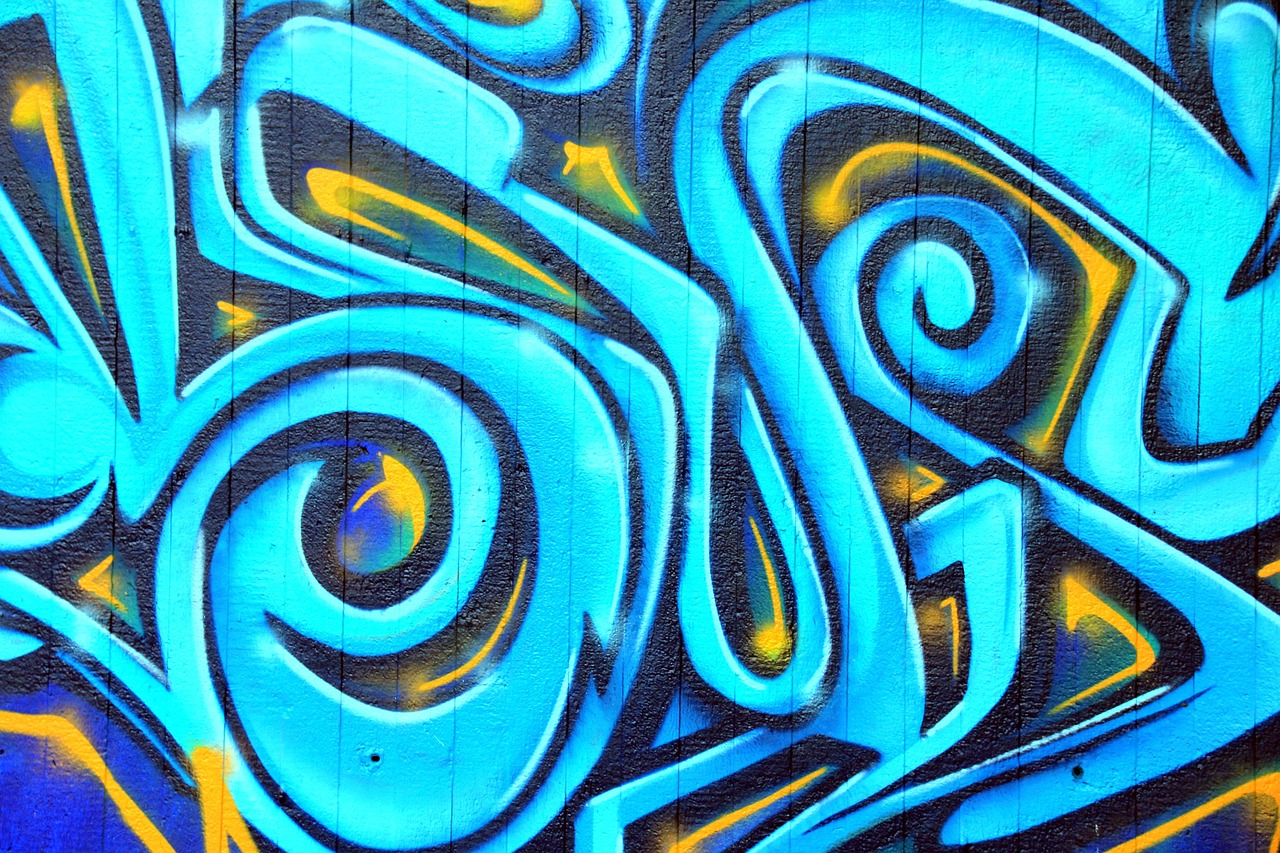
Daily Drawing Challenges
Engaging in can be a transformative experience for artists at any level. Think of it as a workout for your creative muscles! Just like going to the gym helps build physical strength, committing to a daily drawing routine can significantly enhance your artistic skills and confidence. The beauty of these challenges lies in their ability to push you out of your comfort zone and encourage exploration of new techniques and styles.
So, how do you get started? First, set a realistic goal for yourself. It could be as simple as drawing for 15 minutes each day or completing a specific number of sketches. The key is consistency. You might consider using a calendar to track your progress, marking off each day you complete your challenge. This visual representation of your commitment can be incredibly motivating!
Here are some interesting ideas for daily drawing challenges that can spark your creativity:
- Object of the Day: Choose a random object from your surroundings and draw it. This could be anything from a coffee mug to a plant. The goal is to sharpen your observational skills.
- Character Creation: Spend the day designing a new character. Think about their backstory, personality, and how that reflects in their appearance.
- Theme Week: Dedicate each day of the week to a specific theme, such as animals, landscapes, or emotions. This will help you explore different subjects and styles.
Incorporating these challenges into your routine not only keeps your practice fresh but also allows you to experiment with different mediums and techniques. For instance, you might try using a different pencil or pen each day, or even switch between graphite and colored pencils. This experimentation can lead to unexpected discoveries and a richer understanding of your artistic voice.
Moreover, consider sharing your work online. Platforms like Instagram or art-focused communities can provide a space for feedback and encouragement. By sharing your daily drawings, you not only hold yourself accountable but also connect with other artists who can inspire and motivate you. Remember, art is not just about the final piece; it's about the journey and growth you experience along the way.
Lastly, don't be too hard on yourself. Some days will be more productive than others, and that's perfectly okay. The goal is to enjoy the process and learn from each drawing. Embrace the imperfections and celebrate your progress, no matter how small it may seem. After all, every stroke of the pencil is a step towards becoming the artist you aspire to be!
Q: How long should I spend on my daily drawing challenges?
A: Start with 15-30 minutes a day, and adjust based on your schedule and comfort level. The key is consistency!
Q: What if I miss a day?
A: Don't stress! Just pick up where you left off. Consistency is important, but it's also crucial to be gentle with yourself.
Q: Can I use references for my drawings?
A: Absolutely! Using references can help improve your skills and understanding of forms. Just make sure to credit any sources if you're sharing your work online.
Q: What if I don't know what to draw?
A: Try prompts! There are many websites and books with drawing prompts that can inspire you. You can also draw from life or experiment with abstract concepts.

Sketching from Life
Sketching from life is an incredibly rewarding practice that not only sharpens your artistic skills but also deepens your understanding of the world around you. Imagine standing in a bustling park, surrounded by the sounds of laughter and the rustling of leaves, as you capture the essence of your surroundings on paper. This immersive experience allows you to observe details that might otherwise go unnoticed, enhancing your ability to translate what you see into compelling line work.
One of the most significant benefits of sketching from life is the development of your observational skills. When you draw from real life, you're forced to pay attention to the subtleties of light, shadow, and form. Unlike drawing from photographs, which can sometimes flatten the image, life drawing reveals the dynamic interplay of elements in three dimensions. For instance, consider how light reflects off a shiny surface compared to how it diffuses through a sheer curtain. Capturing these nuances can elevate your work from simple representations to vibrant, lifelike depictions.
To get started with life drawing, here are a few tips to keep in mind:
- Choose Your Subject Wisely: Whether it’s a bustling café, a serene landscape, or a lively street scene, select a subject that excites you. The more engaged you are with your subject, the more energy you’ll bring to your drawing.
- Start with Quick Sketches: Begin with short, timed sketches to loosen up. These quick studies help you capture the essence of the scene without getting bogged down in details.
- Focus on Gesture: Pay attention to the movement and posture of your subjects. Capturing the gesture can convey a sense of life and dynamism in your drawings.
- Take Breaks: Don’t hesitate to step back and assess your work. Taking breaks allows you to return to your drawing with fresh eyes, helping you identify areas for improvement.
Another vital aspect of sketching from life is learning to interpret what you see. This is where your unique artistic voice comes into play. Instead of striving for perfection, embrace the imperfections and quirks of your subjects. Perhaps a tree has an unusual twist in its trunk, or a person has a distinctive way of holding their coffee cup. These details can add character and narrative to your drawings.
Moreover, sketching from life can be a fantastic way to build a portfolio. By creating a series of life drawings, you can showcase your ability to observe and interpret the world in a way that resonates with viewers. This collection not only demonstrates your technical skills but also reflects your artistic journey and growth over time.
As you continue to sketch from life, you may find that your confidence grows. Each line you draw becomes a testament to your experience and dedication. So, grab your sketchbook, find a spot that inspires you, and let your creativity flow. Remember, the journey of an artist is filled with exploration, and every sketch is a stepping stone towards mastery.
Q: What materials do I need for sketching from life?
A: While you can use any materials, a simple sketchbook and a set of pencils or pens are ideal for beginners. As you progress, you might want to experiment with charcoal, colored pencils, or ink.
Q: How do I improve my observational skills?
A: Regular practice is key. Try to sketch daily, focusing on different subjects. Pay attention to the details, and don't hesitate to ask for feedback from other artists.
Q: Can I sketch from photographs instead of real life?
A: While sketching from photographs can be helpful, it’s important to balance this with life drawing. Photographs can lack depth and movement, which are crucial for developing your skills.
Q: How long should I spend on each sketch?
A: It depends on your goals. For quick studies, spend 5-15 minutes. For more detailed work, you might spend an hour or more. Just remember to keep it enjoyable!
Frequently Asked Questions
- What is line quality and why is it important?
Line quality refers to the thickness, texture, and fluidity of the lines you use in your drawings. It plays a crucial role in conveying emotion and depth in your artwork. For instance, bold, thick lines can evoke strength, while delicate, thin lines might suggest fragility. Understanding and mastering line quality can significantly enhance your artistic expression.
- What tools do I need for line drawing?
To get started with line drawing, you'll need a few essential tools. This includes a variety of pencils (like graphite and colored), pens (such as ink and brush pens), and good-quality paper. Each tool has its unique characteristics that can affect your line work. Experimenting with different tools can help you find what works best for your style.
- How can I improve my line drawing skills?
Improving your line drawing skills requires regular practice. Engage in daily drawing challenges, sketch from life, and experiment with different techniques like contour drawing, hatching, and cross-hatching. These exercises will help you build confidence, enhance your observational skills, and develop your unique style over time.
- What are some popular styles of line drawing?
Line drawing encompasses a variety of styles, including minimalist, abstract, and illustrative. Minimalist line drawing focuses on simplicity and clarity, while illustrative styles combine detailed lines with imaginative elements. Exploring these styles can help you discover your personal artistic voice and inspire your creativity.
- Can I use colored pencils in line drawing?
Absolutely! Colored pencils can add vibrancy and depth to your line drawings. When using colored pencils, it’s essential to maintain clarity and definition in your lines. You can layer colors and blend them to create interesting effects while ensuring that your line work remains prominent.
- What are some techniques for shading in line drawing?
Hatching and cross-hatching are two fundamental techniques for adding shading and texture to your line drawings. Hatching involves drawing parallel lines, while cross-hatching uses intersecting lines to create depth. Practicing these techniques will help you add dimension and interest to your artwork.



















